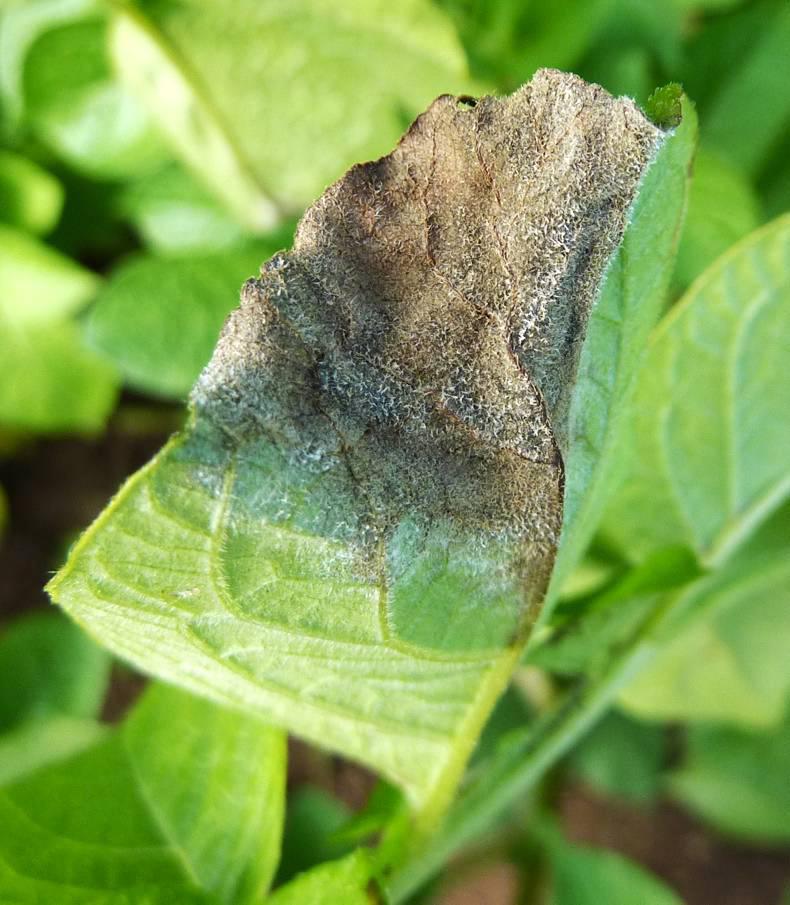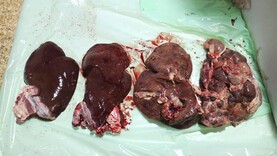The warning follows full infection periods recorded between 7 and 12 June at sites across Northern Ireland.
There is a high risk of blight infection if there are two or more consecutive 24-hour periods that have 11 hours when the minimum temperature is 10°C or more and the relative humidity is greater than 90%, known as the Smith Period.
Speaking to the Irish Farmers Journal, AFBI scientist Gillian Young said that recent warm and wet weather led to a potato blight warning over one month earlier than last year.
Start protecting crops
“It is recommended that farmers start protecting their crops from blight whenever the first blight warning is issued or when plants meet within the drills, whichever is earlier,” Gillian said.
She said that fungicides should be applied at intervals recommended for high-risk conditions, such as the current warm and wet weather.
Nothing makes up for a late start, stretched intervals or areas left unprotected
“Fungicide timing and coverage are critical, as no matter how good the product nothing makes up for a late start, stretched intervals or areas left unprotected. Once blight has got a foot-hold in the crop, it is almost impossible to eradicate it,” she said.
Farmers have again been advised to use a range of fungicides with different modes of action and not to rely on any one active ingredient for more than half of the programme due to the potential presence of blight strains that are resistant to certain fungicides.
Six outbreaks of blight were confirmed in NI last year, making it an extremely low disease season. However, a mixture of blight genotypes were confirmed in the small number of samples submitted to AFBI.
Gillian said that the strains of blight found included A1 types, which are well suited to conditions in NI, as well as the aggressive A2 mating-type genotype known as Blue 13, which is resistant to phenylamide-based fungicides.
Read more
Muggy weather increases ear blight risks
The warning follows full infection periods recorded between 7 and 12 June at sites across Northern Ireland.
There is a high risk of blight infection if there are two or more consecutive 24-hour periods that have 11 hours when the minimum temperature is 10°C or more and the relative humidity is greater than 90%, known as the Smith Period.
Speaking to the Irish Farmers Journal, AFBI scientist Gillian Young said that recent warm and wet weather led to a potato blight warning over one month earlier than last year.
Start protecting crops
“It is recommended that farmers start protecting their crops from blight whenever the first blight warning is issued or when plants meet within the drills, whichever is earlier,” Gillian said.
She said that fungicides should be applied at intervals recommended for high-risk conditions, such as the current warm and wet weather.
Nothing makes up for a late start, stretched intervals or areas left unprotected
“Fungicide timing and coverage are critical, as no matter how good the product nothing makes up for a late start, stretched intervals or areas left unprotected. Once blight has got a foot-hold in the crop, it is almost impossible to eradicate it,” she said.
Farmers have again been advised to use a range of fungicides with different modes of action and not to rely on any one active ingredient for more than half of the programme due to the potential presence of blight strains that are resistant to certain fungicides.
Six outbreaks of blight were confirmed in NI last year, making it an extremely low disease season. However, a mixture of blight genotypes were confirmed in the small number of samples submitted to AFBI.
Gillian said that the strains of blight found included A1 types, which are well suited to conditions in NI, as well as the aggressive A2 mating-type genotype known as Blue 13, which is resistant to phenylamide-based fungicides.
Read more
Muggy weather increases ear blight risks






 This is a subscriber-only article
This is a subscriber-only article










SHARING OPTIONS: